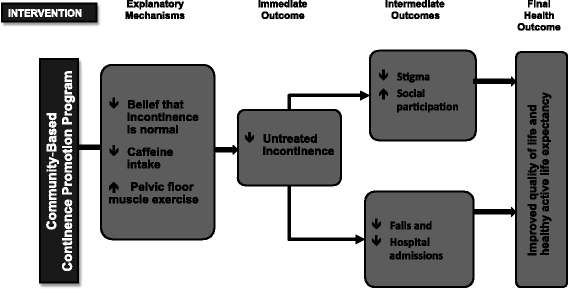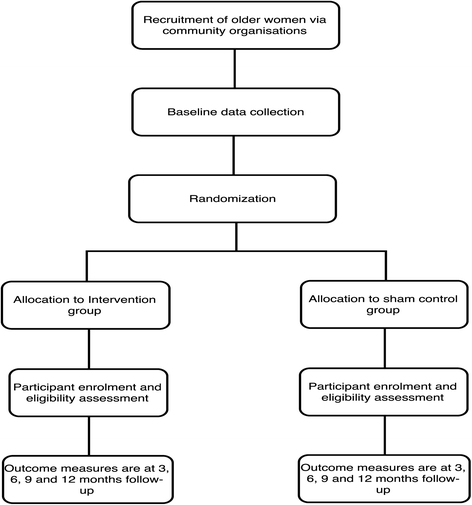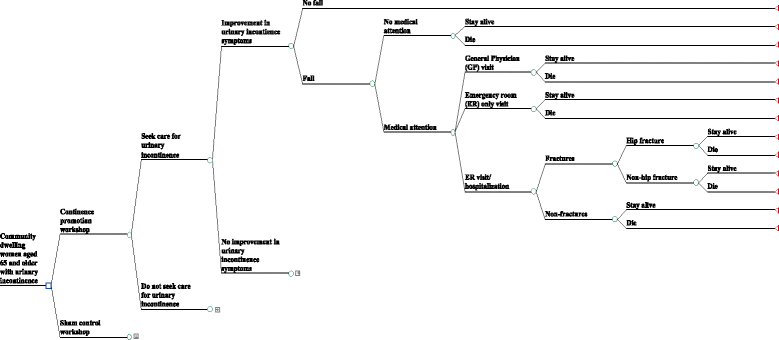Continence Across Continents To Upend Stigma and Dependency (CACTUS-D): study protocol for a cluster randomized controlled trial
- PMID: 26652168
- PMCID: PMC4676178
- DOI: 10.1186/s13063-015-1099-x
Continence Across Continents To Upend Stigma and Dependency (CACTUS-D): study protocol for a cluster randomized controlled trial
Abstract
Background: Urinary incontinence occurs in 40 % of women aged 65 years and over; however, only 15 % seek care and many delay healthcare seeking for years. Incontinence is associated with depression, social isolation, reduced quality of life, falls and other comorbidities. It is accompanied by an enormous cost to the individual and society. Despite the substantial implications of urinary incontinence on social, psychological and physical well-being of older women, the impact of continence promotion on urinary symptom improvement and subsequent effects on falls, quality of life, stigma, social participation and the cost of care remains unknown.
Methods: This study is a mixed methods multi-national open-label 2-arm parallel cluster randomized controlled trial aiming to recruit 1000 community-dwelling incontinent women aged 65 years and older across Quebec, Western Canada, France and United Kingdom. Participants will be recruited through community organizations. Data will be collected at 6 time points: baseline and 1 week, 3 months, 6 months, 9 months and 12 months after baseline. One of the primary objectives is to evaluate whether the continence promotion intervention improves incontinence symptoms (measured with the Patient Global Impression of Improvement questionnaire, PGI-I) at 12 months post intervention compared to the control group. Other co-primary outcomes include changes in incontinence-related stigma, fall reduction, and incremental cost-effectiveness ratio and quality-adjusted life years. Data analysis will account for correlation of outcomes (clustering) within community organizations. A qualitative sub-study will explore stigma reduction.
Discussion: Community-based continence promotion programs may be a cost-effective strategy to reduce urinary incontinence, stigma and falls among older women with untreated incontinence, and simultaneously improve quality of life and healthy active life expectancy.
Trial registration: ClinicalTrials.gov: NCT01858493 , registered 13 May 2013.
Figures



References
-
- Herschorn S, Gajewski J, Schulz J, Corcos J. A population-based study of urinary symptoms and incontinence: the Canadian Urinary Bladder Survey. BJU Int. 2008;101(1):52–8. doi:10.1111/j.1464-410X.2007.07198.x. - PubMed
-
- Buckley BS, Lapitan MCM. Prevalence of urinary and faecal incontinence and nocturnal enuresis and attitudes to treatment and help-seeking amongst a community-based representative sample of adults in the United Kingdom. Int J Clin Pract. 2009;63(4):568–73. doi: 10.1111/j.1742-1241.2008.01974.x. - DOI - PubMed
Publication types
MeSH terms
Associated data
Grants and funding
LinkOut - more resources
Full Text Sources
Other Literature Sources
Medical

